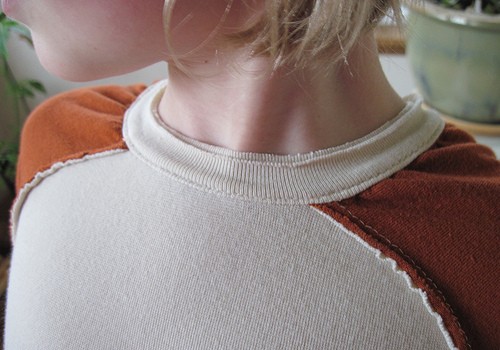
Wear Natural Fabrics When You Train For Better Performance And A Better Environment
The latest synthetic fabrics make waves when they come out. We hear all about how light, breathable, moisture wicking and windproof they are. And for elite athletes, maybe it makes a difference, though I’m unconvinced most of the time. But for most of us, they aren’t just overpriced gimmicks: they’re also almost uniformly made of coal or oil products. Almost all commercial plastics, and that includes polyester, nylon and other synthetic fabrics, are coal or oil products and even more coal and oil is used in energy to make them. Compare that with natural fibers. Yes, cotton has to be transported; yes, sheep for wool have to be fed. But woven wool is one of the most ideal training clothing materials there could be: it’s light, breathable, cool in the heat, warm in the cold and can absorb sometimes as much as three times its own weight in water before it even feels wet to the touch. Old cotton and wool clothes rot when they’re landfilled; old synthetic clothes, with their non-biodegradable fabrics, are here to stay, long after they’ve outstayed their welcome. Investing in solid natural-fibre training gear could be a great gift to yourself –and the planet...
The latest synthetic fabrics make waves when they come out. We hear all about how light, breathable, moisture wicking and windproof they are. And for elite athletes, maybe it makes a difference, though I’m unconvinced most of the time. But for most of us, they aren’t just overpriced gimmicks: they’re also almost uniformly made of coal or oil products. Almost all commercial plastics, and that includes polyester, nylon and other synthetic fabrics, are coal or oil products and even more coal and oil is used in energy to make them. Compare that with natural fibers. Yes, cotton has to be transported; yes, sheep for wool have to be fed. But woven wool is one of the most ideal training clothing materials there could be: it’s light, breathable, cool in the heat, warm in the cold and can absorb sometimes as much as three times its own weight in water before it even feels wet to the touch. Old cotton and wool clothes rot when they’re landfilled; old synthetic clothes, with their non-biodegradable fabrics, are here to stay, long after they’ve outstayed their welcome. Investing in solid natural-fibre training gear could be a great gift to yourself –and the planet!
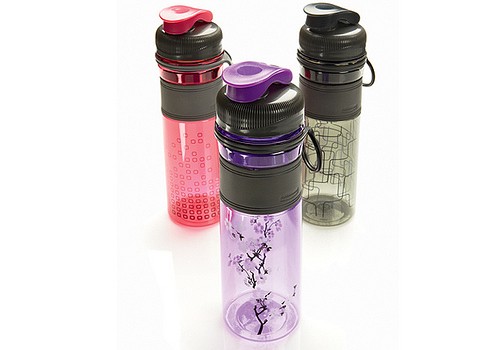
BPA-Free Water Bottles - Better For Your Health, Better For The Planet
BPA is a biphenol corbon compound that's clear, tough and not very soluble in water. That makes it a great choice for bottle manufacturers, except for that bit about it being not very soluble in water. It is slightly soluble in water and it has hormone-like effects in lab tests, leading some scientists to question its suitability for drinking containers. The US FDA recommends it not be used in baby bottles and Canada has declared it a toxic substance; other countries are considering the move. So what can you use instead? Well, there's always glass, but it has a tendency to break and it's quite heavy. Metal makes good, light, tough water bottles that are BPA free and won't shatter, and several companies now proudly sell theirs as being BPA free. That's better for your health, better for the environment because you're re-using the same product instead of a single-use, throwaway product or cheap plastic water-bottle that will eventually deplasticise in the sun's UV rays, become brittle and break. But those plastic water-bottles go to landfill when they're thrown away and the chemicals in them leech into the water tables, contaminating rivers, streams and mainline drinking water. It's a great...
BPA is a biphenol corbon compound that's clear, tough and not very soluble in water. That makes it a great choice for bottle manufacturers, except for that bit about it being not very soluble in water. It is slightly soluble in water and it has hormone-like effects in lab tests, leading some scientists to question its suitability for drinking containers. The US FDA recommends it not be used in baby bottles and Canada has declared it a toxic substance; other countries are considering the move. So what can you use instead? Well, there's always glass, but it has a tendency to break and it's quite heavy. Metal makes good, light, tough water bottles that are BPA free and won't shatter, and several companies now proudly sell theirs as being BPA free. That's better for your health, better for the environment because you're re-using the same product instead of a single-use, throwaway product or cheap plastic water-bottle that will eventually deplasticise in the sun's UV rays, become brittle and break. But those plastic water-bottles go to landfill when they're thrown away and the chemicals in them leech into the water tables, contaminating rivers, streams and mainline drinking water. It's a great move for the environment not to use them!
- Important notification about information and brand names used in this slideshow!
- Photo courtesy of Rubbermaid Products by Flickr : www.flickr.com/photos/rubbermaid/6959989243/
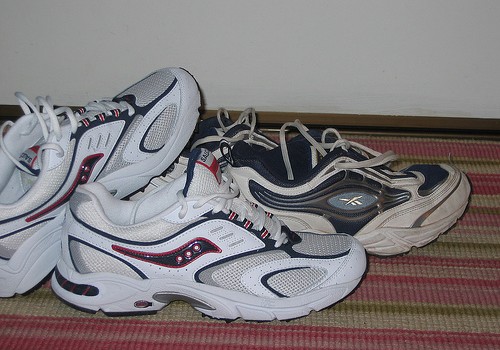
Recycle Old Shoes And Training Clothes When You Can
The sexes tend to differ in terms of what they hope to happen to their clothes when they start training. Guys hope to outgrow their shirts, while ladies tend to hope to fit back into their jeans. But shoes and training clothes can have a longer life if you plan ahead. Use running shoes you can re-use for another purpose after they're no good for training any more. Repurpose training bottoms into gardening gear. Shoes especially can often be literally recycled at special depots.
- Important notification about information and brand names used in this slideshow!
- Photo courtesy of gadgetdude by Flickr : www.flickr.com/photos/gadgetdude/340451333/

Walk Instead Of Driving When You Get The Chance
Walking instead of driving is killing, not one, but three, birds with one stone. Think about it. It's saving you money twice: once in the gas money you don't have to pay to ride Shanks' pony, and once in gym fees. Then, it's saving the environment because you're not driving. People in the developed world walk extremely little, probably so little that it does our health harm. And we use our cars so much that it's definitely doing the environment harm, stinking up the air in our big cities and spreading damaging pollutants far and wide. If you can avoid using the car, walk.
- Important notification about information and brand names used in this slideshow!
- Photo courtesy of Mr. T in DC by Flickr : www.flickr.com/photos/mr_t_in_dc/2503413787/

Processed Energy Foods And Sports Drinks Aren't Always The Best Choice
Sometimes processed energy foods or drinks can have a place in your training. But how many of their benefits could you not get some other way? Many supplements, like whey protein supplementation, are essentially byproducts of the dairy foods industry: that's why they're so cheap. But some 'energy' drinks or 'power bars' cost a fortune and are highly ecologically unfriendly to produce. Which begs the question: what if they could be replaced with something equally effective but less environmentally unfriendly? Well, a few years ago at Harvard someone obviously thought something similar, and conducted a large trial to see what the most effective sports rehydration drink was. Sports isotonic drinks - the high-priced ones with bright labels that stock up gym drinks machines across the nation - did perform better than water. But the best performing drink at rehydrating athletes after exercise? Milk. Maybe it's time to ditch those highly-processed 'energy' snacks too and find something a little healthier and less environmentally toxic.
- Important notification about information and brand names used in this slideshow!
- Photo courtesy of Mahmut by Flickr : www.flickr.com/photos/mahmut/3439025713/
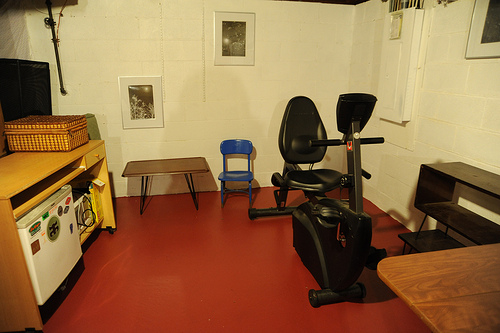
Homemade Alternatives To The Gym Or Leisure Centre
We all think of training or working out as something you go to the gym and do. And gyms love that! But gyms are pretty environmentally unfriendly. They're expensive to run and have to be heated, lit and the machines kept running while they're open. That's all burning electricity and damaging the environment. Couldn't you get some of the same results at home? Well, it turns out the most important pieces of equipment any gym has are it straining staff. If the trainers are good, you'll get results - and you'll probably find that you're using minimal equipment to get there. Why not try training at home or in the park a few days a week and going to the gym for a top-up at the weekend? Training at home will save you traveling time, travel costs and that makes an environmental difference too.
- Important notification about information and brand names used in this slideshow!
- Photo courtesy of Wonderlane by Flickr : www.flickr.com/photos/wonderlane/5180605800/
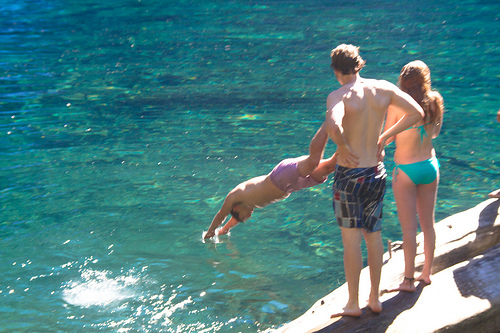
Swim In Rivers, Lakes Or The Sea Rather Than Swimming Pools
Swimming pools are great - but they're expensive to run, and have to be heated and lit. They also use chlorine as a disinfectant. which is vital for cleanliness but which causes environmental damage down the line as well as causing red eyes, runny noses and sore heads. But there's an alternative. 'Wild swimming' groups have sprung up all over the world in recent years and you can find one in your area easily. You'd be surprised at how many waterways there are, even in the unlikeliest of places, that are suitable for swimming in. And apart from the transport to get there, they won't cost you a dime. The additional benefits are less chlorine pollution from pools, and pressure on government to protect the local environment coming direct from people who actually use it; just look at the successes of Surfers Against Sewage.
- Important notification about information and brand names used in this slideshow!
- Photo courtesy of Razvan Orendovici by Flickr : www.flickr.com/photos/razvanorendovici/7867533424/
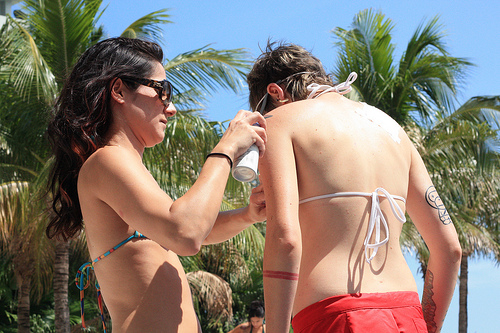
Use Safer Bug Spray And Sunscreen - And Think Green Outdoors
Bug spray and sunscreen only seem like luxuries til you go somewhere where you actually need them. Then they're revealed to be necessities! But some are safer than others, for you and the environment. We've all seen someone plunging into a pool or the sea, swimming away followed by their own private oil slick of sunscreen dissolving in the water. Not a good look. But the problem runs deeper than that; a study in the Journal of Environmental Health Perspectives found that, in Australia, over 6, 000 tonnes of sunscreen were released yearly into the water, causing coral bleaching - killing the reefs. Look for sunscreens that are free of petrochemical additives, nanoparticles and don't put it on right before jumping in the water. As far as bug spray goes, one of the most perennially popular options is DEET. That's N,N-diethyl-m-toluamide to the folks in the lab, and it's popularly regarded amongst visitors to buggy areas as the land rover of bug repellents: clunky, ugly and effective. While the mass of evidence shows that DEET is safe for consumers at the levels suggested, though, it's got some potentially serious environmental side effects because its active ingredient disrupts the nervous systems...
Bug spray and sunscreen only seem like luxuries til you go somewhere where you actually need them. Then they're revealed to be necessities! But some are safer than others, for you and the environment. We've all seen someone plunging into a pool or the sea, swimming away followed by their own private oil slick of sunscreen dissolving in the water. Not a good look. But the problem runs deeper than that; a study in the Journal of Environmental Health Perspectives found that, in Australia, over 6, 000 tonnes of sunscreen were released yearly into the water, causing coral bleaching - killing the reefs. Look for sunscreens that are free of petrochemical additives, nanoparticles and don't put it on right before jumping in the water. As far as bug spray goes, one of the most perennially popular options is DEET. That's N,N-diethyl-m-toluamide to the folks in the lab, and it's popularly regarded amongst visitors to buggy areas as the land rover of bug repellents: clunky, ugly and effective. While the mass of evidence shows that DEET is safe for consumers at the levels suggested, though, it's got some potentially serious environmental side effects because its active ingredient disrupts the nervous systems of insects and possibly other animals. Take wet wipes, wash your DEET off before swimming and reapply afterwards (bugs will lose interest in you when you swim anyway; they're attracted to the smell of your sweat) and take your wipes home with you.
- Important notification about information and brand names used in this slideshow!
- Photo courtesy of Liz Mc by Flickr : www.flickr.com/photos/11638547@N00/4787114972/
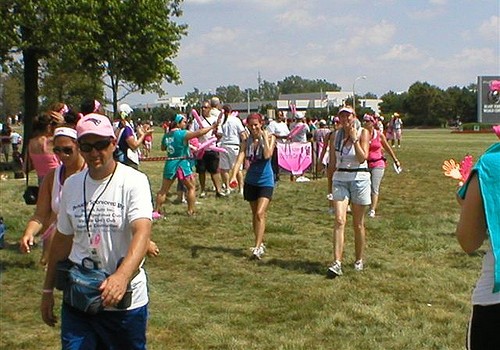
Try A Charity Run Or Walk In Your Local Area
Taking part in a charity run or walk is a great way to meet other people who might be interested in the same fitness pursuits as you. It's also a good way to get some training in without having to use anything more environmentally damaging than a pair of trainers. You get to explore your local area and meet new people, and you can get people in your workplace involved too. If you're a keen exerciser but family members aren't it's a good way to get them on board; if it's the other way around it's a good introduction, with no pressure involved. Of course, it's also a good way to make some money for charity!
- Important notification about information and brand names used in this slideshow!
- Photo courtesy of Annie Pilon by Flickr : www.flickr.com/photos/anniehp/4899343717/

Treat Yourself To A Massage Once in a While
OK, so it's not necessarily going to stop Al Gore telling us all inconvenient truths. But a good sports massage can free up stiff joints and damaged muscles, relax tense nerves and restore good posture and function. It's not a bad idea to have one a couple of times a year on principle, regardless of whether or not you actually feel sore. At the massage table is also a good place to get ideas about what you're doing wrong in your training the rest of the time. Whatever your issue is, your masseur or masseuse has seen it a hundred times before and will be able to tell you how it;s normally caused.
- Important notification about information and brand names used in this slideshow!
- Photo courtesy of RelaxingMusic by Flickr : www.flickr.com/photos/83905817@N08/7676555602/






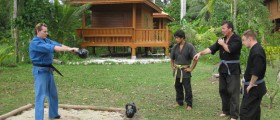





_f_280x120.jpg)
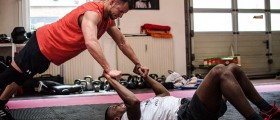










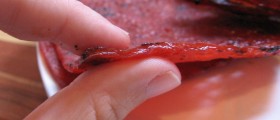
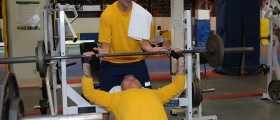
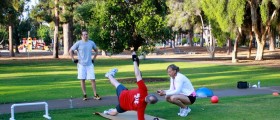
Your thoughts on this
Loading...